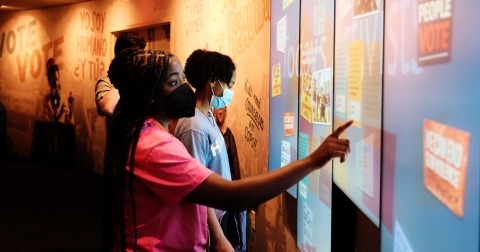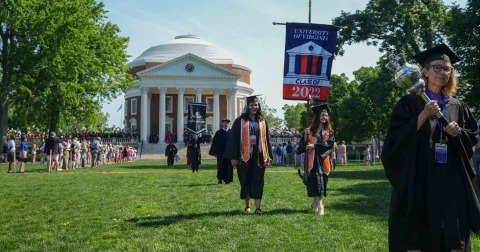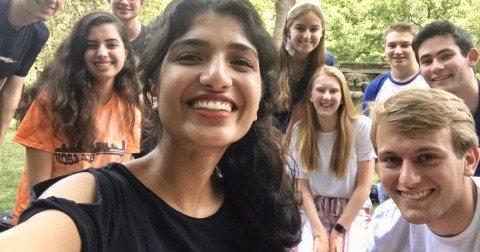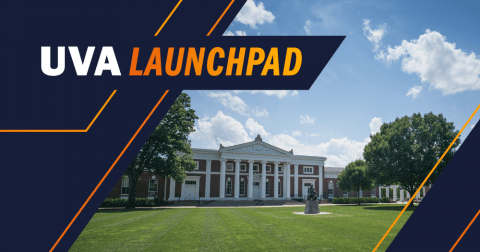Landmark faculty vote ensures innovative new curriculum for future A&S undergraduates
BY JOHN CARFAGNO
ILLUSTRATION BY GUSTAF HJALMARS
The second Arts & Sciences faculty meeting of the Fall 2019 semester was not going to be ordinary. The outcome of the meeting could alter the educational experience of future A&S students for decades and establish UVA’s liberal arts program as one of the most innovative in the country.
Before pouring into the Nau Lecture Hall for a two-hour dialogue on the three-year college curriculum pilot and a vote to decide the fate of the program, faculty were met by a group of students there to support approval of the new curriculum. Among the group of students assembled outside was second-year College student Noah Strike. As a student who opted to enroll in the new curriculum pilot his first year on Grounds, Strike felt strongly enough about his experience to write several opinion columns for The Cavalier Daily, UVA’s student newspaper. In one column, Strike called the new curriculum “an incredible feat of our faculty’s ingenuity” and an “innovative approach to education.” Strike was also instrumental in encouraging UVA's Student Council to pass a resolution in support of curricular innovation.

“The New College Curriculum is a stunning example of academic progress,” Strike wrote in a second column last October. Citing the work students do in the new curriculum’s Engagements component as an example of its strengths, he called it more analogous to work in an upper-level seminar than the type of work required in traditional first-year courses. According to Strike, “Perhaps more important than all else, it provides first-year students with an experience unachievable at any other university in the country.”
A vote of confidence for a new approach
That morning, Arts & Sciences faculty voted not only to adopt the new curriculum as an option; they made it mandatory for all incoming students. The new model represents the first significant, comprehensive changes to the Arts & Sciences undergraduate student curriculum in more than 40 years, setting a new benchmark for general education praised by Johns Hopkins University and other elite universities looking to follow suit.
“The fact that our faculty voted to affirm the new curriculum is not only significant for UVA, it is a milestone in American higher education,” says Ian Baucom, Buckner W. Clay Dean of Arts & Sciences.
“We’re staking a claim on the power of a liberal arts education in the 21st century with a unique new approach that will better prepare our students for an increasingly complex and interconnected world,” Baucom adds.

The new curriculum offers two distinct sets of requirements intended to give students tools for learning and succeeding far beyond their four years at UVA:
1 A NEW FIRST-YEAR EXPERIENCE
Students begin by selecting four “Engagements” seminars, which introduce students to the broad range of academic perspectives that define the arts and sciences across four different modes of inquiry:
- Engaging Aesthetics
- Engaging Differences
- Empirical and Scientific Engagement
- Ethical Engagements
2 VITAL ACADEMIC LITERACIES
Beyond the Engagements, in order to build practical skills for successful academic and career pursuits, students must:
- Satisfy a robust writing requirement
- Achieve proficiency in a second language
- Attain the quantitative and computational fluency essential to navigating an ever more data-driven world.
The approach provides first-year students with a broad foundation upon which to build their critical thinking abilities and to help them bring multiple perspectives to bear on any topic. The Engagements courses, which are intentionally smaller in enrollment size and cover half a semester, emphasize group work and discussion in a seminar-like environment where students engage with the big questions and challenges facing the world. In these ways, the Engagement courses are designed to prepare students not only for their majors and their academic careers, but also to better prepare them for life in the workplace and a democratic society. When Nia Williams, a third-year student, reflects on her first-year experience with the Engagements, she says the new curriculum taught her how to think more deeply, to confidently express her thoughts, to have empathy for others and profound appreciation for their perspectives, and especially, how to explore ideas from multiple angles. She came up with a “teddy bear” analogy to describe her first-year learning experience to friends unfamiliar with the new curriculum.
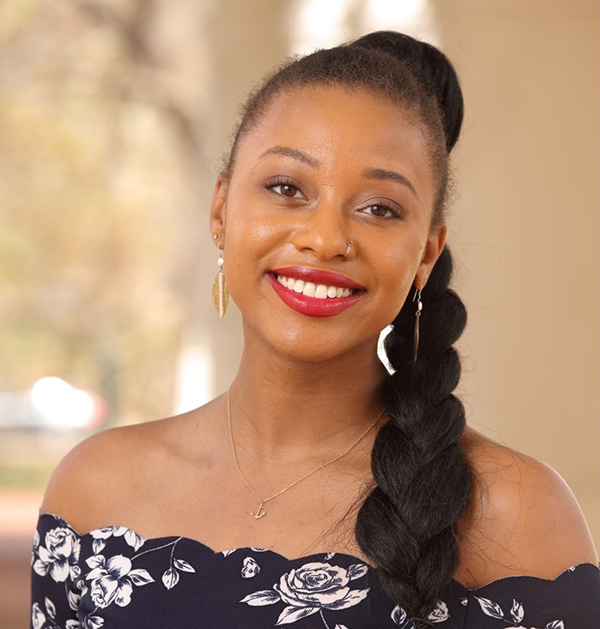
“If you’re in a normal college somewhere or in a traditional class, it’s like, ‘This is a teddy bear… cool, it’s soft,’” says Williams. “But in the new curriculum we say, ‘OK, this is a teddy bear… this is who it’s named after, this is how it’s made, these are the chemicals that it’s made out of, this is the social impact of teddy bears,’” she adds, explaining how the Engagements give students the tools to think bigger and make connections.
“The new curriculum encourages interdisciplinary thinking and how things relate in unique ways.” — Nia Williams
Williams credits the new curriculum for developing her understanding of scientific thinking, her research abilities and for “encouraging interdisciplinary thinking and how things relate in unique ways.” It inspired her to pursue the Interdisciplinary Major Program, combining arts administration and African American studies with a minor in social entrepreneurship.
Big returns from small classes and top teachers
The vote made faculty support for the new curriculum clear: more than three-quarters of the faculty elected to adopt the program. When and how to implement the new curriculum proved more contentious and drew the lion’s share of the debate preceding the vote. Many were emphatic that small class sizes and securing the most highly sought professors were essential to delivering the pilot’s transformative outcomes.
The initial pilot program model was built on a class size of 60 students for the first-year Engagements courses. By design, this is much smaller than the average class size for first-year students, which is typically about 150. In reality, Engagements class sizes in the pilot proved to be closer to 30 students.
From the student perspective, Strike says the deliberately smaller class sizes have a huge impact on making outstanding professors more accessible. “The format makes it common for students to connect with professors and get involved with their research,” Strike says. In his first year, his passion for politics and international relations led to working on a research project with College Fellow Adrienne Ghaly. In her Engagements class, Ghaly connected Strike with a research project she was working on for the Humanitarian Collaborative.
“I had the opportunity to co-author a white paper and participate in a video call with U.N. and other leaders from around the world,” says Strike, who called the small class sizes intimidating at first. It took a few weeks to get used to, he says, but the learning and the opportunities presented within the format make it invaluable.
In making the new curriculum mandatory, the Dean’s Office committed to working with the College Fellows and faculty across all departments to ensure the Engagements classes would launch close to their pilot size of 30-35 students. Smaller class sizes require more Fellows for teaching; that and other factors involved in implementing the new curriculum will definitely increase the Arts & Sciences budget above what has already been allocated in the annual cost for the program. According to Dean’s Office calculations, it will take about three years to scale up the Engagements in order for them to be available for all incoming first-year students.
“The format makes it common for students to connect with professors and get involved with their research.” —Noah Strike
Philanthropic support remains critical to implementing the new curriculum at full scale and to fueling further academic innovations enhancing the undergraduate experience.
“Providing a second-to-none liberal arts education at this scale is no small undertaking,” says Baucom, who is excited to see the enthusiasm students, faculty, and alumni have for the new curriculum as well as the positive attention it has attracted nationally across the academic community. “Now that it has moved beyond the pilot stage, I’m hoping donors will respond by investing more deeply in the new curriculum — a program which will have a profound influence on all of our students for generations to come.”



